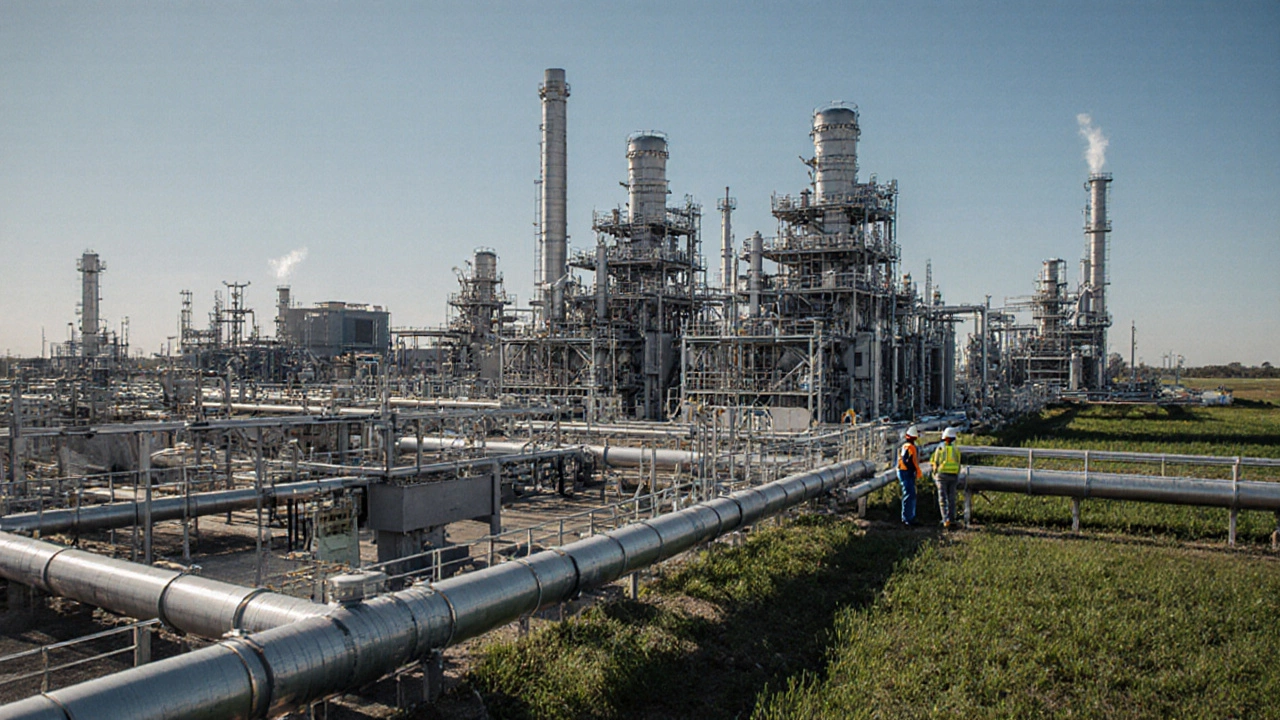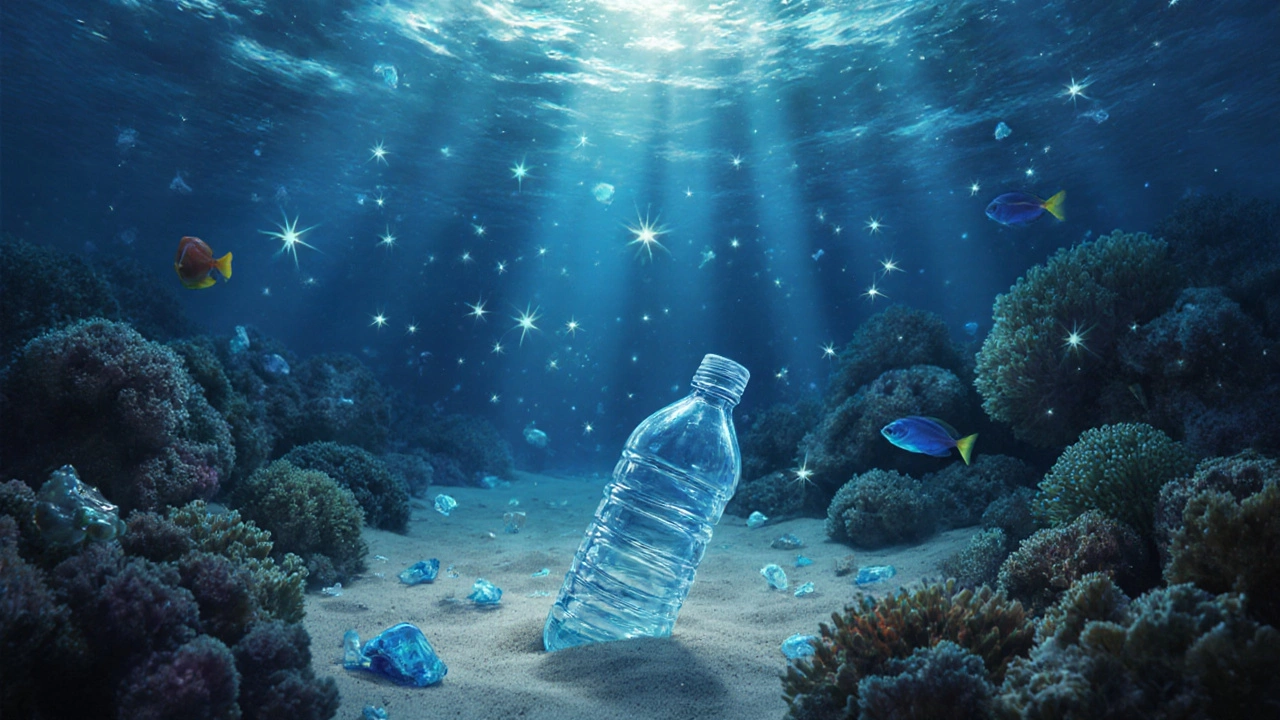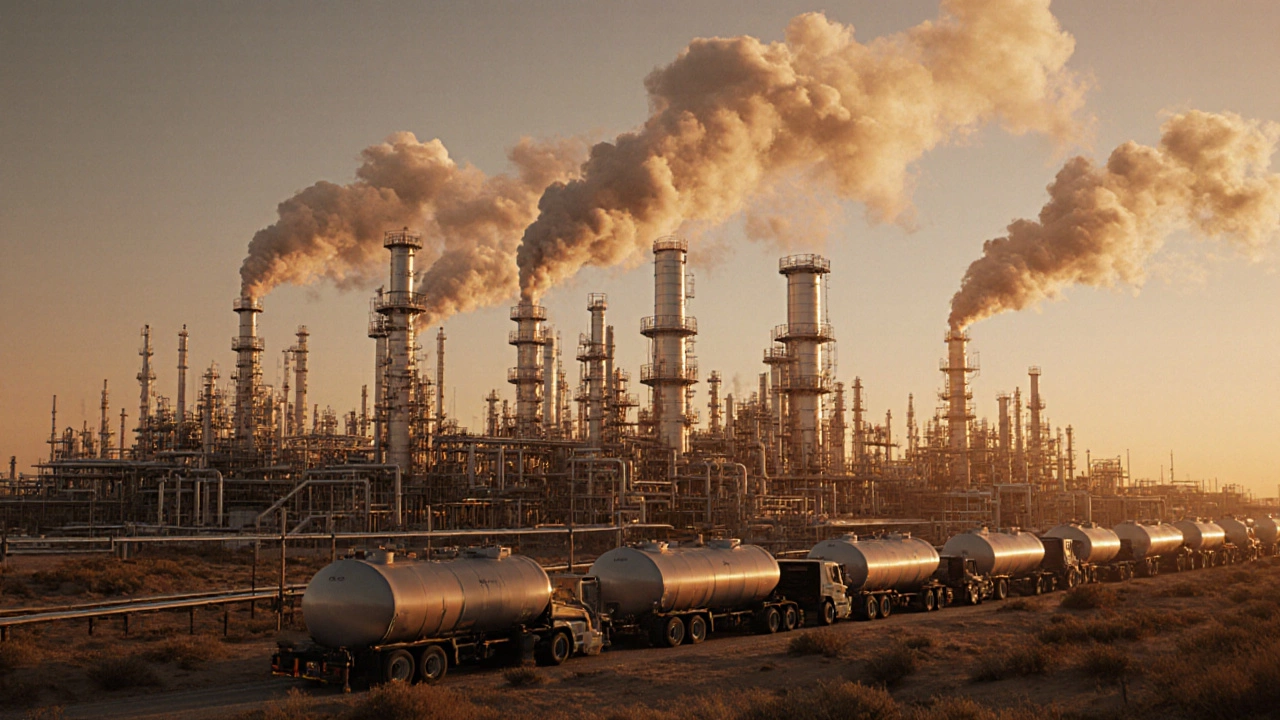Plastic Oil Usage Calculator
How much oil is used to make your plastic?
Most plastic is made from fossil fuels. This calculator shows the oil equivalent for common plastic items based on production data.
Your plastic usage requires barrels of oil.
Note: Based on data showing 1 kg of plastic requires approximately 0.013 barrels of oil from fossil fuels.
Most of the plastic you touch every day - from water bottles and food containers to phone cases and car parts - starts as oil. Not just any oil, but petroleum, the same thick, black liquid pulled from deep underground that fuels cars and heats homes. About 99% of the world’s plastic is made from fossil fuels, mostly crude oil and natural gas. It’s not magic. It’s chemistry. And it’s deeply tied to how we’ve built our modern economy.
Where the oil comes from
The biggest sources of plastic feedstock are the same places that pump out gasoline and diesel: Saudi Arabia, Russia, the United States, Iran, and Iraq. These countries control over half of global oil reserves. In 2024, the U.S. produced nearly 13 million barrels of oil per day, and a growing chunk of that now goes to plastic, not fuel. Why? Because demand for gasoline is slowly dropping as electric cars rise. Plastic? Demand keeps climbing.
Once crude oil is pulled from the ground, it’s shipped to refineries. There, it’s heated and split into smaller molecules in a process called fractional distillation. One of those fractions - naphtha - becomes the main building block for plastic. Naphtha is cracked using steam or heat, breaking long hydrocarbon chains into smaller ones like ethylene and propylene. These are the gases that get turned into polyethylene and polypropylene, the two most common plastics on the planet.
But it’s not just oil. Natural gas, especially ethane from shale gas fracking in the U.S., is becoming a bigger player. Ethane is easier and cheaper to turn into ethylene than naphtha. That’s why plastic factories are popping up along the Gulf Coast - right next to fracking sites and pipelines. In 2023, over 60% of new U.S. plastic capacity came from ethane-based feedstocks. It’s cheaper, cleaner to process, and locally sourced.
What happens after the gas is made
Once you have ethylene or propylene, the real plastic-making begins. These gases are mixed with catalysts and squeezed under high pressure into long chains called polymers. Polyethylene becomes milk jugs, plastic bags, and shampoo bottles. Polypropylene goes into yogurt containers, bottle caps, and automotive parts. Polystyrene, made from styrene (another derivative of benzene from oil), is used in foam cups and packaging peanuts.
Each type of plastic has a different recipe. PVC, for example, needs chlorine - which comes from saltwater through electrolysis. That’s why you’ll often find PVC plants near coastal areas or large salt mines. The whole process is energy-heavy. Making one kilogram of polyethylene takes about 80 megajoules of energy - roughly the same as running a 100-watt lightbulb for 24 hours.
Why not use plants instead?
You’ve probably heard of “bioplastics.” Companies like Coca-Cola and Danone are pushing plant-based bottles made from sugarcane or corn. These are marketed as eco-friendly. But here’s the catch: less than 1% of global plastic production today comes from plants. Why? Because it’s still way more expensive. Corn starch or sugarcane ethanol costs three to five times more than petroleum-based ethylene. Plus, growing crops for plastic competes with food production. It uses land, water, and fertilizers that could feed people.
Even when plant-based plastics are made, they often still need fossil fuels to process them. And most can’t be recycled in regular bins - they need special industrial composters that don’t exist in most cities. So while they sound green, they’re not a real solution yet.

What about recycling?
People think recycling solves the plastic problem. It doesn’t. Less than 10% of all plastic ever made has been recycled. Why? Because plastic degrades each time it’s melted down. A water bottle might become a fleece jacket, but that jacket can’t become another bottle. It’s a one-way street. Most recycled plastic ends up in low-value products like park benches or carpet fibers - and even those are hard to recycle again.
Also, plastic isn’t sorted well. A single contaminated bottle - say, one with yogurt residue - can ruin an entire batch. Recycling plants in the U.S. and Europe often send plastic waste overseas, but countries like Malaysia and Indonesia are now banning it. So a lot of it just ends up in landfills or the ocean.
The hidden cost of plastic feedstocks
Behind every plastic bag is a chain of environmental damage. Oil drilling pollutes water and destroys habitats. Fracking leaks methane - a greenhouse gas 80 times more potent than CO2 over 20 years. Plastic factories emit toxic chemicals like benzene and dioxins. Workers near these plants in places like Louisiana’s “Cancer Alley” have cancer rates five times higher than the national average.
And once plastic is made, it lasts. A plastic bottle can take 450 years to break down. Microplastics from degraded bottles and packaging are now in the air we breathe, the fish we eat, and even in human blood. A 2022 study found microplastics in 80% of blood samples from volunteers across Europe and the U.S.

What’s changing?
Some countries are starting to push back. The European Union banned single-use plastics like cutlery and plates in 2021. Canada and India have similar bans. China stopped importing plastic waste in 2018, forcing Western countries to deal with their own trash.
Companies are also experimenting with chemical recycling - breaking plastic back down to its original molecules using heat or solvents. But it’s still expensive and energy-heavy. Only a handful of plants exist, mostly in Germany and the U.S. They’re promising, but not scalable yet.
There’s also growing pressure to design plastic out of products. Glass bottles, metal containers, and paper packaging are making a comeback. Some supermarkets now let you bring your own jars. Startups are creating packaging from mushroom roots or seaweed. These aren’t perfect, but they’re moving in the right direction.
What you can do
You don’t need to live perfectly zero-waste to make a difference. Start by avoiding single-use plastic. Buy in bulk. Choose glass or metal over plastic when you can. Support brands that use refill systems. Ask your local store if they’ll take back containers. Every time you refuse a plastic bag or straw, you’re telling companies: we don’t need this.
It’s easy to feel powerless. But plastic isn’t inevitable. It was invented in the 1950s as a cheap, convenient material. We chose to use it everywhere. Now we can choose to use less. The raw materials come from the earth - but the decision to keep using them? That’s still ours.
Are all plastics made from oil?
Almost all - about 99% - are made from petroleum or natural gas. The remaining 1% comes from plant-based sources like corn or sugarcane, but these are still rare, expensive, and often not biodegradable in normal conditions.
Can plastic be made without fossil fuels?
Technically yes, but not at scale. Plants like sugarcane or algae can be turned into plastic-like materials, but they require large amounts of land, water, and energy to produce. They’re also harder to recycle and don’t perform as well as petroleum-based plastics in many applications. Right now, fossil fuels are still the cheapest and most reliable source.
Why isn’t recycling more effective for plastic?
Plastic loses quality every time it’s melted down. It can’t be recycled infinitely like glass or metal. Also, most plastic is mixed with dyes, adhesives, or food residue, which makes it hard to sort. Only clean, single-type plastics (like PET bottles) are worth recycling - and even then, less than 10% of all plastic gets recycled globally.
Which countries produce the most plastic raw materials?
The top oil-producing countries - the United States, Saudi Arabia, Russia, Iran, and Iraq - also supply the most feedstock for plastic. The U.S. is now the fastest-growing producer due to cheap shale gas, which is used to make ethylene. China leads in plastic manufacturing but imports most of its raw materials.
Is bioplastic better than regular plastic?
Not really, at least not yet. Bioplastics may come from plants, but they still require industrial composting to break down - which most cities don’t have. Many are just as toxic to wildlife, and their production uses farmland and water that could feed people. They’re not a silver bullet.

